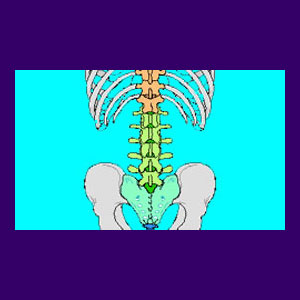
Surgery on the lower back is the most drastic treatment a patient can seek for chronic lumbar pain and/or sciatica. It is only due to ferocious and recurrent suffering that any patient would even consider such a dramatic potential solution. As a fellow patient, I completely understand the desperation of chronic pain. We often think that things are so bad, that they can not possibly get worse and are ready to acquiesce to virtually anything to be rid of the terrible agony. This article stands as a wake-up call for those at the precipice of making a possibly damning decision.
Back surgery is known to be the riskiest and least enlightened of all dorsalgia treatments, and that is saying a lot, considering that most are poorly conceived, recklessly executed and may not even be targeting the correct source of symptoms. However, unlike non-invasive treatments, once a patient goes under the knife, the spinal anatomy will never be the same, since surgery does damage which can not be denied in the majority of patients. It is for this reason that patients must be extremely cautious when making the decision to pursue a surgical fix for their pain.
This essay will detail lower back surgery, including why it is used, the results often generated and other important information for patients considering a lumbar spinal operation.
Lower Back Surgery
Doctors rate surgical procedures as a success or failure based on the goal of the procedure, not on pain relief enacted. This is a known fact.
Let me repeat it, in case you do not realize the implications of this statement:
A procedure is said to be successful if it achieves the anatomical goal of the operation; not if it provides any semblance of relief.
For example: A spinal fusion is said to be successful if the vertebral levels actually fuse, not if pain relief is provided.
A discectomy is said to be successful if the piece of disc theorized to be causing symptoms is actually removed, not if any relief is provided.
Keep this in mind as you research so called “positive” results of spinal surgery.
Meanwhile, it is a known and well publicized fact that most procedures fail in providing pain relief immediately or over a longer time line. This is why even the most enthusiastic surgeons now typically recommend that surgery be saved as a very last resort.
Surgery on the Lower Back Facts
Very few spinal surgeries provide pain relief in the long run. This is a fact. Some operations provide a complete cure for a few months or years, but then the patient endures a relapse at the same location, or a nearby spinal level, requiring additional surgery after additional surgery.
Many patients have this same repeat operative pattern, except the surgery provides them with no relief at all. They simply require more surgeries, year by year, as their pain grows.
A great number of patients are immediately worsened by their operations, but, you guessed it, still need follow up surgeries as the remainder of their spines suffer the normal accelerated degeneration common to postoperative patients.
Only a small number of chronic pain sufferers achieve long lasting cures from a single episode of back surgery. This is a fact.
Of all the spinal regions, the lumbar location reacts to surgery the worst, with more patients citing poor results than in comparable procedures performed on the thoracic or cervical levels of the vertebral column.
Surgery on the Lower Back Final Thoughts
A crucial reminder to doctors: Patients undergo surgery to achieve lasting pain relief. They could care less about the technical aspects of failure or success, just to fulfill a medical definition which amounts to a lie.
The bottom line comes down to failed back surgery being the most common eventual result of lumbar operations, since surgery is not a solution to the most common forms of spinal pain.
Why don’t more doctors realize this?
Why don’t they tell their patients the absolute truth about spinal surgery?
A patient who endures a horrific spinal fusion surgery, only to continue dealing with torturous pain, despite the fact that the fusion is solid and is therefore deemed to be successful, is not a success. It is a miserable failure and viewing it any other way is idiotic.
Is this a strong opinion? Sure, but it is realistic and based on facts, unlike the propaganda used by less ethical doctors to bait patients into unneeded and unsuccessful procedures year after year.
My bottom line, when it comes to surgery on the lower back, comes down to this: Be careful. Surgery might be the answer for you in select cases, but in most instances, it is likely to be optional, risky and will typically fail in providing the expected gratifying results.
Do your homework and research your choices for treatment carefully. Get multiple opinions from different types of care providers and consider noninvasive options as being better bets in almost every circumstance.
Remember, once surgery alters the lumbar anatomy to an unnatural state, bad things usually follow.





